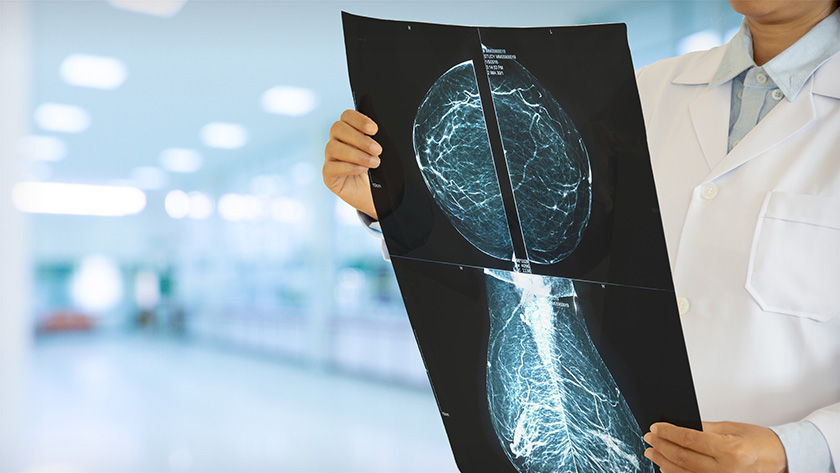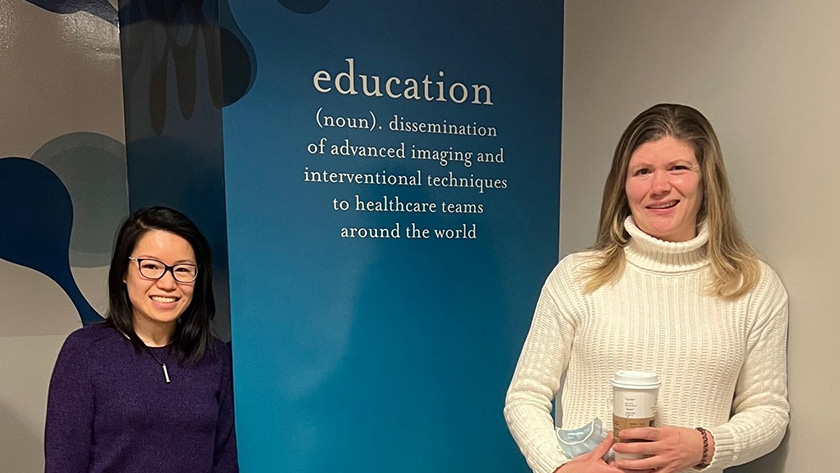
As more health care workers call in sick with COVID-19, the shortage of health care professionals has worsened. To meet the critical need for excellence in patient care, researchers at The Institute for Education Research (TIER) undertook a systematic and collaborative study to identify areas where the roles of existing staff may be expanded.
“Task shifting is a healthcare human resource strategy that focuses on the selective redeployment of healthcare providers,” says Ms. Caitlin Gillan, an Education Investigator at TIER who led the study. “Its goal is to make better use of existing scopes of practice, enhance the potential for new roles, and adjust existing processes to increase efficiency.”
The research team, including breast imaging technologists Aruna Mahabir (UHN), Chao Li (Sinai Health) and Sheena Chung (Women’s College Hospital), identified medical imaging as a promising area to consider for optimization. Because most patient care involves imaging, changes to related processes would be expected to have big effects. The research team focused on breast imaging processes and looked at whether expanding the role of medical radiation technologists could improve patient care.
The research team worked with interprofessional groups in breast imaging departments across three hospitals to map out their processes and identify recurring problems in care delivery. The team also identified gaps, bottlenecks and redundancies that may reduce the quality of care for patients. Using this information, they found opportunities where task shifting could enhance the knowledge and skills of medical radiation technologists.
The teams identified 11 workflows that were common or unique to the hospital sites. They then collectively identified 222 care delivery problems based on these workflows. Radiologist availability was the most frequent constraint across the different workflows.
This work identified opportunities to expand the role of medical radiation technologists, including providing patient education and ordering exams in specific situations that would help to reduce patient wait times. Providing medical radiation technologists with additional knowledge and training would also support their career development and enhance staff retention.
“By pinpointing the challenges within current workflows and highlighting opportunities for task shifting, we can now pilot new roles and models of care to benefit the health care system,” says Ms. Gillan. To this end, Ms. Sheena Chung, the lead author on the publication that stemmed from this study, has secured funding from the Canadian Association of Medical Radiation Technologists to pilot an advanced role for technologists at Women’s College Hospital.
This work was supported by the Canadian Association of Medical Radiation Technologists and the UHN Foundation. Ms. Caitlin Gillan is an Assistant Professor of Radiation Oncology and Medical Imaging at the University of Toronto.
Chung S, Mahabir A, Li C, Kim R, Harnett N, Gillan C. Process optimization in breast imaging: Exploring advanced roles for medical radiation technologists. J Med Imaging Radiat Sci. 2021 Dec 15. doi: 10.1016/j.jmir.2021.11.012.

(L-R) Sheena Chung, breast imaging technologist at Women’s College Hospital; Ms. Caitlin Gillan, Education Investigator at TIER.




